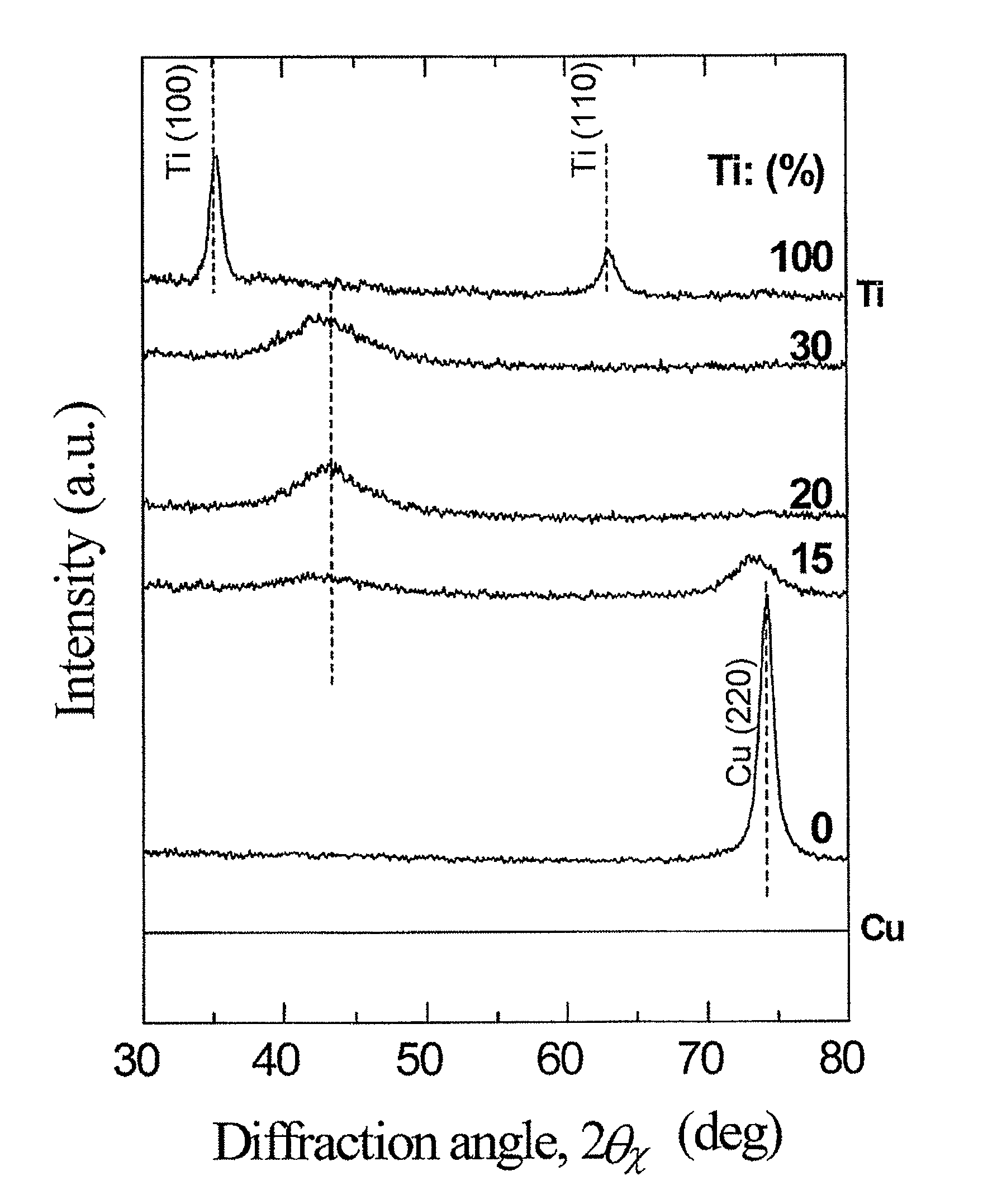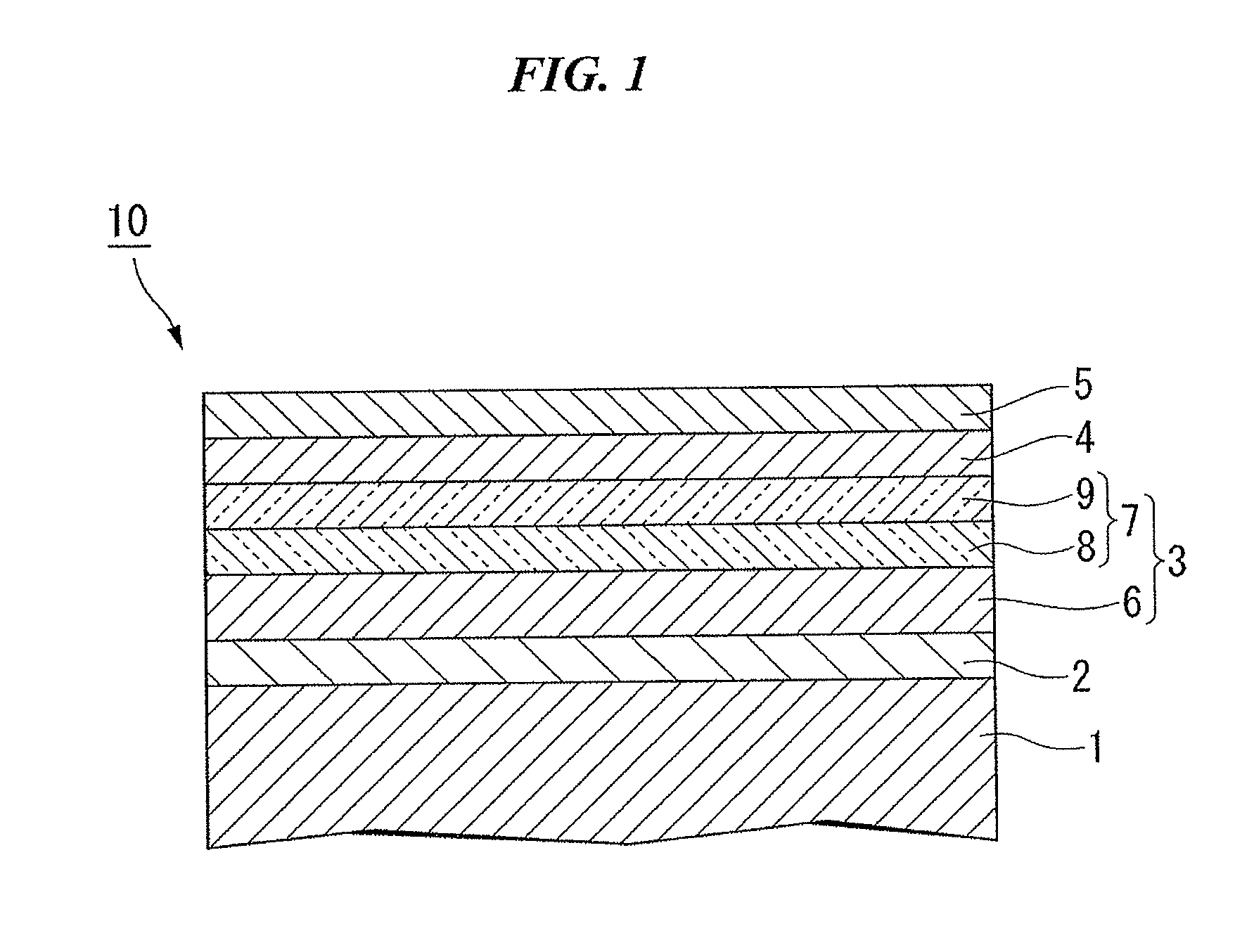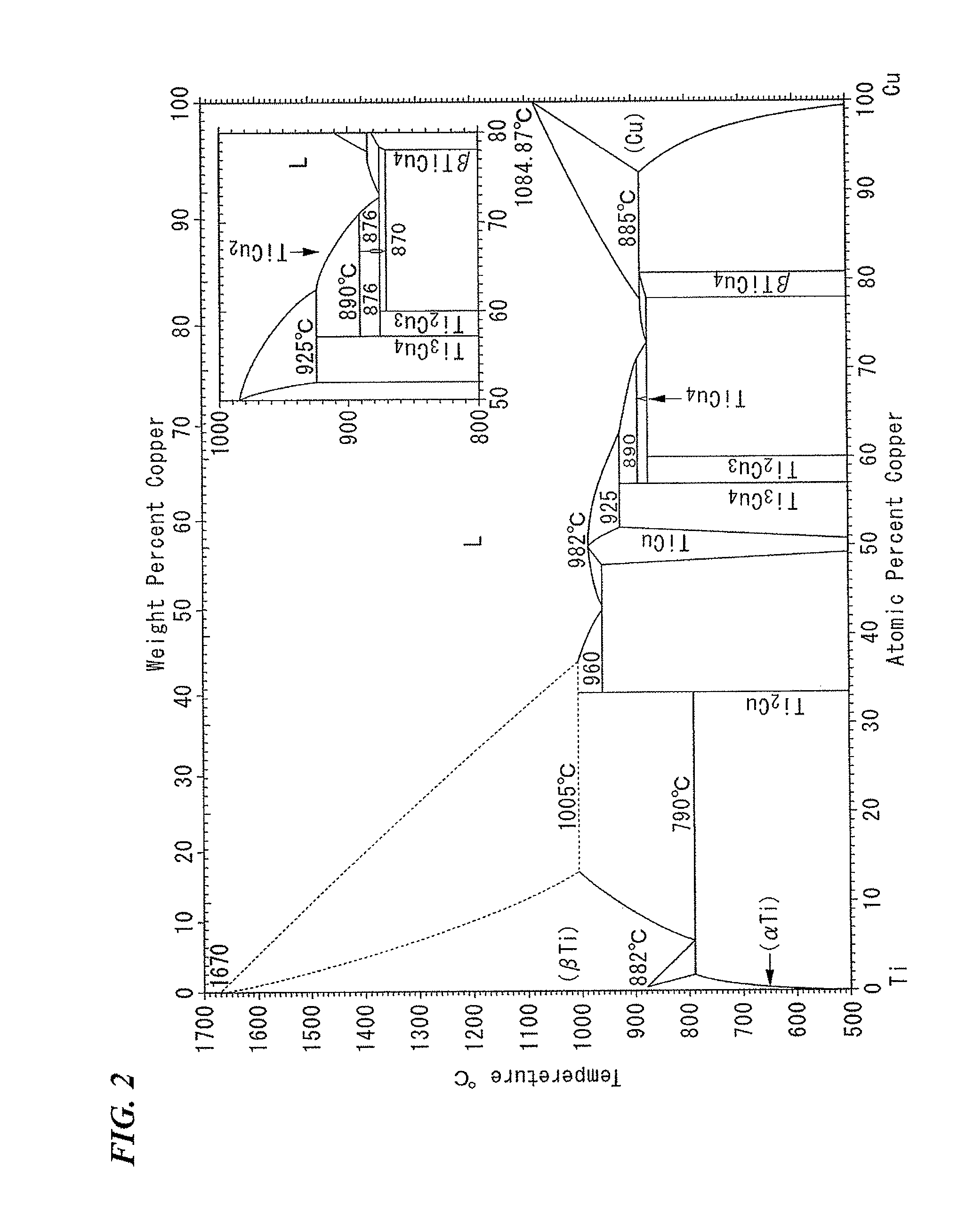Magnetic recording medium, method of manufacturing the same, and magnetic recording/reproducing apparatus
a technology of magnetic recording medium and manufacturing method, which is applied in the direction of magnetic bodies, instruments, record information storage, etc., can solve the problems of weakened magnetic field applied from the head, large thickness of the medium layer, and high degree of crystal orientation. , to achieve the effect of small thickness range, uniform diameter and high degree of crystal orientation
- Summary
- Abstract
- Description
- Claims
- Application Information
AI Technical Summary
Benefits of technology
Problems solved by technology
Method used
Image
Examples
example 1-1
[0114]First, an HD glass substrate was set in a vacuum chamber of a sputtering apparatus, and the vacuum chamber was evacuated to a pressure of 1.0×10−5 Pa or less.
[0115]Then, a soft magnetic underlayer (thickness: 50 nm) made of Co-10Ta-5Zr was formed on the glass substrate in an Ar atmosphere by a sputtering method. In this case, the pressure of Ar gas was 0.6 Pa. (In the composition formula of each alloy, a number given to the front side of each element indicates the content (at %) of each element in the alloy, and the content of an element given no number is the remaining content of the other element).
[0116]Then, a seed layer (thickness: about 5 nm) made of Cu-7Ti was formed on the soft magnetic underlayer in an Ar atmosphere by the sputtering method. In this case, the pressure of Ar gas was 0.6 Pa.
[0117]The profile of the seed layer was observed by In-plane X-ray diffraction. As a result, a peak caused by the fcc (220) crystal plane and another peak on the low-angle side of the...
examples 1-2 and 1-3
[0122]A perpendicular magnetic recording medium was manufactured by the same method as that in Example 1-1 except that the composition of the seed layer was changed as shown in Table 1.
[0123]The profile of the seed layer formed in each magnetic recording medium was observed by In-plane X-ray diffraction. As a result, a peak caused by the fcc (220) crystal plane and another peak arranged on the low-angle side of the peak were observed. The observation result proved that each seed layer had the pseudo-hexagonal structure in which the fcc (111) crystal plane was oriented substantially perpendicular to the surface of the substrate.
example 2-1
[0136]Similar to Example 1-1, a soft magnetic underlayer was formed on a glass substrate.
[0137]Then, a seed layer (thickness: about 4 nm) made of Cu-7Ti was formed on the soft magnetic underlayer in an Ar atmosphere by the sputtering method. In this case, the pressure of Ar gas was 0.6 Pa.
[0138]Then, a first intermediate layer (thickness: 8 nm) made of Ru was formed on the seed layer in an Ar atmosphere by the sputtering method. In this case, the pressure of Ar gas was 0.6 Pa.
[0139]Then, a second intermediate layer (thickness: 8 nm) made of Ru was formed on the first intermediate layer in an Ar atmosphere by the sputtering method. In this case, the pressure of Ar gas was 10 Pa.
[0140]Then, a magnetic recording layer (thickness: 12 nm) made of 90(Co-12Cr-20Pt)-10(SiO2) (a number given to the front side of the composition formula of each composite indicates the content (mol %) of each composite) was formed on the second intermediate layer in an Ar atmosphere by the sputtering method. I...
PUM
| Property | Measurement | Unit |
|---|---|---|
| thickness | aaaaa | aaaaa |
| thickness | aaaaa | aaaaa |
| particle diameter | aaaaa | aaaaa |
Abstract
Description
Claims
Application Information
 Login to View More
Login to View More - R&D
- Intellectual Property
- Life Sciences
- Materials
- Tech Scout
- Unparalleled Data Quality
- Higher Quality Content
- 60% Fewer Hallucinations
Browse by: Latest US Patents, China's latest patents, Technical Efficacy Thesaurus, Application Domain, Technology Topic, Popular Technical Reports.
© 2025 PatSnap. All rights reserved.Legal|Privacy policy|Modern Slavery Act Transparency Statement|Sitemap|About US| Contact US: help@patsnap.com



